ESE PhD Colloquium Series
The PhD Colloquium Series provides a platform for PhD students to present their research interests, theories and progress to an audience of their peers. This event is exclusively attended by current PhD students and their Postdoctoral colleagues. During each weekly session, a PhD student presents a 30- to 45-minute presentation, allowing for 10-15 minutes of Q&A. These discussions help students better define their research and implement innovative interdisciplinary approaches to their work, build relationships with students outside of their research laboratory, and prepare for their Proposal Examinations and Dissertation Defense. A Committee of postdoctoral colleagues and faculty review video recordings from this series to determine the winners of the annual ESE PhD Colloquium Award.
If you are interested in presenting your work, email the ESE PhD Association at esepa@seas.upenn.edu.
Spring 2025 Series
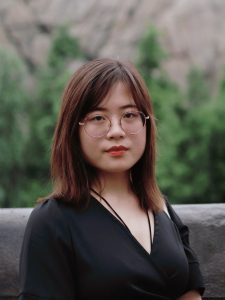 Yuwei Wu
Yuwei Wu
Monday, March 24th
Raisler Lounge (Towne 225)
Real-Time Spatiotemporal Motion Planning for Autonomous Robots
Bio: Yuwei Wu is a third-year Ph.D. student in the GRASP Laboratory under the supervision of Prof. Vijay Kumar. Her research focuses on motion planning and trajectory optimization for mobile robots, particularly in dynamic, uncertain, and complex real-world environments. She received her B.Eng. degree in Transportation Engineering from Beijing Jiaotong University, China, in 2019, and her M.S.E. degree in Systems Engineering from the University of Pennsylvania in 2022. Before pursuing her Ph.D., she worked with Prof. Fei Gao at Zhejiang University on trajectory optimization for quadrotors.
Read Yuwei's Abstract
The representation of geometric environments and moving objects plays a critical role in obstacle avoidance. However, not all representations are well-suited for real-time planning that requires efficient representation, querying, and updating. A key challenge in this domain is computing a good approximation of the environment for trajectory optimization. In this talk, I will introduce the concept of Safe Flight Corridors (SFC) and how to locally optimize them along a predefined path with waypoints initialized by a geometric or kinematic planner. I will then explore the role of SFCs in environmental representation for learning-based trajectory optimization, particularly for quadrotors. Finally, I will present how temporal constraints can be integrated to generate temporal corridors for dynamic obstacle avoidance and discuss potential extensions incorporating different sensor inputs.
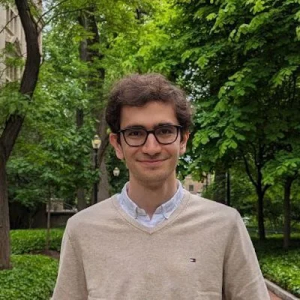 Behrad Moniri
Behrad Moniri
Monday, March 3rd
Raisler Lounge (Towne 225)
Understanding Deep Learning via Simple Models
Bio: Behrad is a Ph.D. student in the Electrical and Systems Engineering department at the University of Pennsylvania, advised by Prof. Hamed Hassani. His research focuses on deep learning theory, high-dimensional statistics, and information theory. He obtained his M.A. in Statistics from the Wharton School of the University of Pennsylvania in 2024, and his B.Sc. in Electrical Engineering from the Sharif University of Technology in 2020, with highest distinctions.
Read Behrad's Abstract
In this talk, I begin by providing a subjective overview of the theoretical and practical trends in modern deep learning, which motivates a deep learning theory based on simple models. As a case study, I demonstrate that the random features (RF) model—a minimalist framework—can reveal new and previously unknown behaviors of deep models under distribution shift. Recognizing the RF model’s limitation in that it does not learn features, I propose an extension that incorporates feature learning while remaining fully analyzable. I then illustrate how this new model can demystify and theoretically motivate layer-wise preconditioning in deep learning optimization. Additionally, I show that the extended model exhibits intriguing phenomena such as grokking and emergence.
Fall 2024 Series
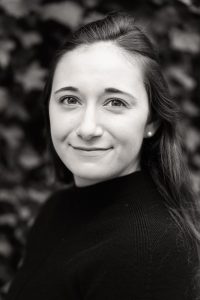 Sydney Acosta
Sydney Acosta
Thursday, December 5th
Raisler Lounge (Towne 225)
Multiferroic MEMS Magnetic Field Sensors for Biomedical Applications
Bio: Sydney Acosta is a fifth-year Ph.D. student under the guidance of Prof. Troy Olsson. She earned her bachelor’s degree in Biomedical Engineering at Purdue University in 2020. Her research interests include the design and development of multiferroic microelectromechanical systems (MEMS) sensors for biomedical applications. She is a National Defense Science and Engineering Graduate Fellow.
Read Sydney's Abstract
The human body produces magnetic fields wherever ion exchange occurs. Detecting these pico-Tesla level magnetic fields enables non-invasive monitoring of brain and heart health, but medical-grade sensing methods require large equipment with high power consumption. This talk will detail a solution using microelectromechanical systems (MEMS) composed of a magnetostrictive and piezoelectric material. After an introduction to the sensor design and operation, we will discuss the design process, electrical and magnetic characterization, and results.
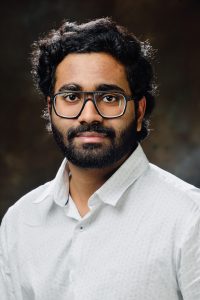
Uday Kiran Reddy Tadipatri
Thursday, November 21st
Raisler Lounge (Towne 225)
How Much Data Is Enough? A Convex Relaxation Approach to Generalization
Bio: Uday Kiran is a second-year Ph.D. student under the supervision of Prof. René Vidal. He earned his bachelor’s degree in Electrical Engineering from the Indian Institute of Technology, Hyderabad, in 2023. His research interests include optimization techniques and establishing statistical guarantees for control systems, machine learning, and signal processing applications.
Read Uday's Abstract
Many prediction problems rely on experimental data, and intuitively, the more complex the model, the more data is needed for consistent performance. This talk addresses the critical issue of quantifying the amount of data sufficient to achieve such consistency. We begin with foundational concepts from classical statistical learning theory and progress to advanced, problem-specific measures developed in recent research. While these measures are often tailored to specific problems, this talk presents our recent work on a general framework for generalization theory through convex relaxations. This framework applies to a certain broad class of models, ranging from linear models in signal processing to highly non-linear models in deep learning
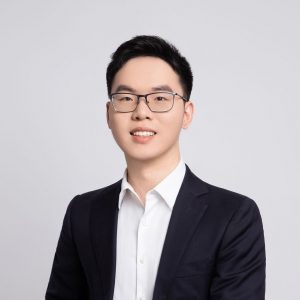 Liangzu Peng
Liangzu Peng
Tuesday, November 5th
Raisler Lounge (Towne 225)
Prehistory of Continual Learning and All Else That We Forget
Bio: Liangzu Peng is a fourth-year PhD student working with Rene Vidal. He received his master’s degree from ShanghaiTech University and his undergraduate at Zhejiang University. He has co-authored over 20 papers on machine learning, computer vision, optimization, and signal processing. His current research focus is on continual learning.
Read Liangzu's Abstract
I would probably “forget” what I will say in the abstract, and you would, too. Translation: deep neural networks can “forget”, meaning they might perform poorly on previously learned tasks when learning a new task. A major goal of the subject now known as deep continual learning is to address this issue. In order to alleviate forgetting, the subject seems to forget that it has a prehistory (1960 – 1980). In this talk, we will recollect a few historical pieces and compare them with their modern counterparts. If time allows, I shouldn’t forget and should be excited to share my recent work on continual learning with you.
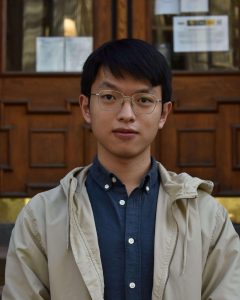 Shuo Yang
Shuo Yang
Thursday, October 24th
Raisler Lounge (Towne 225)
Learning Local Control Barrier Functions for Safety-Critical Hybrid Systems
Bio: Shuo Yang is a Ph.D. student at the University of Pennsylvania, where he is advised by Professor George J. Pappas. Shuo is affiliated with the GRASP Lab and PRECISE Center. Previously, he obtained his Bachelor’s degree (Summa Cum Laude) from Shanghai Jiao Tong University in 2021. He has also spent time at Toyota Research and Tencent AI. He is broadly interested in formal methods, machine learning, control theory, and algorithmic game theory, with their applications to robotic and multi-agents systems.
Read Shuo's Abstract
Safety-critical control is one of the fundamental problems in autonomous systems. A special class of autonomous systems is the class of hybrid dynamical systems, which involves both continuous dynamic flow and discrete dynamical mode jumps for state evolution. I will introduce how to synthesize safe controllers for hybrid dynamical systems based on local control barrier functions (CBFs), and such a framework enjoys flexibility, non-conservativeness, and computational advantage compared with existing safety-critical methods. Then, I will show how to learn local CBFs for hybrid systems through self-supervision techniques. Finally, I will briefly share some ideas on learning safe and adaptive controllers in multi-agents systems.
Spring 2024 Series
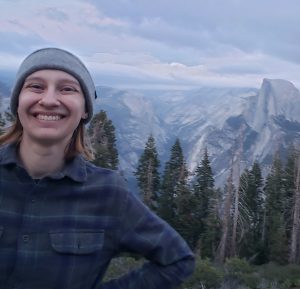 Elizabeth Schell
Elizabeth Schell
Tuesday, March 26, 2024
Singh 313
Degradable Active Soil Monitoring
Bio: Elizabeth Schell is a 4th year PhD student in Prof. Mark Allen’s group working on degradable electronics as part of IoT4Ag, an NSF research center for precision agriculture. She started her adventures in research at MIT (B.S. in Electrical Engineering) and Stanford (M.S. in Electrical Engineering) working on flexible and stretchable electronics. Outside the lab, she likes to go on outdoor adventures and craft. Inside the lab, she also likes to work on crafts.
Read Elizabeth's Abstract
Farming requires a balance of providing enough inputs, like water and fertilizer, to ensure sufficient yield while minimizing the consequences of overusing these resources, which can be costly, scarce, or lead to adverse environmental effects, such as eutrophication caused by nutrient run off. Current soil monitoring practices involve manually collecting soil samples that are sent to off site labs to be tested. In this talk, I’ll discuss the design of a platform for in-situ soil nutrient monitoring, which will enable the collection of high spatial resolutiIon information about multiple soil parameters.
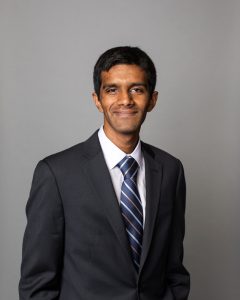 Vasant Iyer
Vasant Iyer
Tuesday, March 12, 2024
Singh 313
“GraphIC Design”: using silicon architectures to create reliable graphene magnetic sensor arrays”
Bio: Vasant is a PhD student in Electrical and Systems Engineering at the University of Pennsylvania, co-advised by Firooz Aflatouni and David Issadore. He received his BS degree in Electrical Engineering from the California Institute of Technology in 2017. His research focuses on the integration of CMOS electronic circuits with 2D materials and silicon photonics to implement new devices for biosensing and metrology.
Read Vasant's Abstract
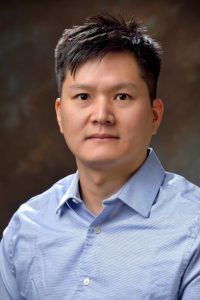 Dongsheng Ding
Dongsheng Ding
Tuesday, February 27, 2024
Singh 313
Multi-Agent Reinforcement Learning for Large-Scale Markov Potential Games
Bio: Dongsheng Ding is a Postdoctoral Researcher in the Department of Electrical and Systems Engineering at the University of Pennsylvania. He received his Ph.D. in Electrical Engineering from the University of Southern California. His research interest lies in developing reinforcement learning approaches for learning to control constrained and multi-agent dynamical systems.
Read Dongsheng's Abstract
Multi-agent reinforcement learning (RL) has found widespread success in multi-agent systems with decision-making agents. Its applications span diverse domains, ranging from playing games to navigating robotics to making economic policy. Unfortunately, the curse of dimensionality and/or multiagency poses scalability challenges for classical RL methods, particularly when dealing with large state spaces and/or numerous agents. This talk addresses the scalability challenges in the framework of independent learning (i.e., no coordination among agents), and focuses on Markov potential games for multi-agent RL. Firstly, we introduce an independent policy gradient method, where each agent updates its policy myopically using policy gradients. When the policy gradient is evaluated exactly, this method demonstrates non-asymptotic convergence to a near-Nash policy, with a polynomial dependency on the number of agents. Interestingly, the iteration complexity is not explicitly dependent on the state space size. Secondly, when the exact policy gradient is unavailable, we propose the function approximation of the value function to handle large state spaces and present polynomial sample complexity of our method in finding a near-Nash policy, showcasing the efficacy of our method in large-scale Markov games. Finally, we conclude with the game-agonistic convergence property for a variant of our method, finding a near-Nash policy in more than two types of games.
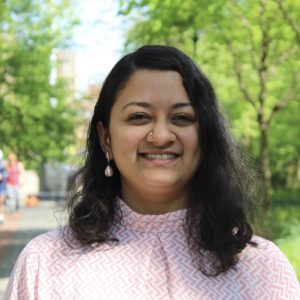 Anusha Srikanthan
Anusha Srikanthan
Tuesday, February 13, 2024
Singh 313
Layered Control Architectures in Trajectory Optimization for Underactuated Robotic Systems
Bio: Anusha Srikanthan is a 3rd year PhD student in Electrical and Systems Engineering working with Dr. Nikolai Matni and Dr. Vijay Kumar. Her research interests are at the intersection of robot navigation, learning for control, and multi-agent systems. Previously, she completed her Masters Thesis at Georgia Institute of Technology advised by Dr. Harish Ravichandar and Dr. Sonia Chernova. The focus of her thesis was on the design of algorithms for learning implicit task requirements for multi-agent task allocation using data from expert demonstrations. Outside of academia, she was a classical dance performer and headed the dance team during her undergraduate years at NIT Trichy, India.
Read Anusha's Abstract
We consider joint trajectory generation and tracking control for under-actuated robotic systems. A common solution is to use a layered control architecture, where the top layer uses a simplified model of system dynamics for trajectory generation, and the low layer ensures approximate tracking of this trajectory via feedback control. While such layered control architectures are standard and work well in practice, selecting the simplified model used for trajectory generation typically relies on engineering intuition and experience. First, we propose a layered control architecture for exact reference tracking control using a suitable augmented Lagrangian reformulation of a linear optimal control problem and solve via primal-dual optimization without assuming a simplified model. We show that the resulting controller is an optimal linear feedback controller stabilizing system trajectories around dynamically feasible reference trajectories. We discuss implications of this result for quantifying sub-optimality of existing layered architectures for robot navigation, considering the context of a cartpole, a unicycle, and a quadrotor control problem in simulation. Next, we propose an alternative data-driven approach to dynamics-aware trajectory generation and show that applying a penalty method to a global nonlinear optimal control problem results in a relaxed layered decomposition of the overall problem into trajectory planning and feedback control layers. Crucially, the resulting trajectory optimization is dynamics-aware, in that it is modified with a tracking penalty regularizer encoding the dynamic feasibility of the generated trajectory. We show that this tracking penalty regularizer can be learned from system rollouts for independently-designed low layer feedback control policies. Furthermore, we showcase our framework on two quadrotor hardware platforms to illustrate that our approach i) avoids conservatism from ad hoc maximum speed and acceleration constraints and, ii) outperforms baselines in practical considerations such as aerodynamic drag and controller saturation.
Fall 2023 Series
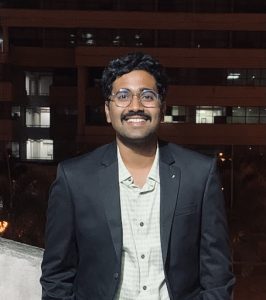 Uday Kiran Reddy Tadipatri
Uday Kiran Reddy Tadipatri
Tuesday, October 10, 2023
Towne 225/Raisler Lounge
Stochastic Approximation and its Applications in Blackbox Optimization under Block Updates
Bio: Uday is a first-year Ph.D student by Professor René Vidal. His current research interests are Deep Learning Theory and Stochastic Optimization. Uday received his B.Tech in Electrical Engineering from India Institute of Technology, Hyderabad in 2023 with a Research Excellence Award. His achievements include IEEE Signal Processing Cup 2022 at ICASSP, and KVPY Fellowship 2017.
Read Uday's Abstract
In tribute to Boris Polyak, this talk focuses on analyzing the convergence of the Heavy-Ball method, an optimization technique that has gained immense attraction in the realm of Machine Learning. The talk extensively uses Stochastic Approximation, a 1950’s paradigm currently used in Reinforcement Learning. By framing Heavy-Ball as a stationary point problem, this work provides a generic framework that guarantees convergence under convex and certain class of non-convex objectives. This work shows convergence guarantees in both gradient-free methods and block coordinate updates, which have great computational savings in large-scale optimization problems.
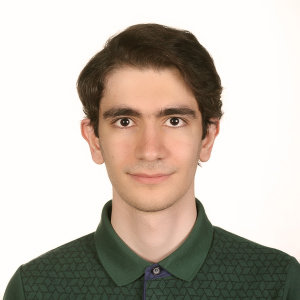 Behrad Moniri
Behrad Moniri
Tuesday, October 31, 2023
Towne 225/Raisler Lounge
A Theory of Non-Linear Feature Learning with One Gradient Step in Two-Layer Neural Networks
Bio: Behrad is a PhD student in the Department of Electrical and Systems Engineering at the University of Pennsylvania, advised by Professor Hamed Hassani. His current research interests are deep learning theory, mean-field asymptotics, probability, and information theory. Behrad received his B.Sc. degree in Electrical Engineering from the Sharif University of Technology in 2020 with highest distinctions.
Read Behrad's Abstract
Feature learning is thought to be one of the fundamental reasons for the success of deep neural networks. It is rigorously known that in two-layer fully-connected neural networks under certain conditions, one step of gradient descent on the first layer followed by ridge regression on the second layer can lead to feature learning; characterized by the appearance of a separated rank-one component — spike — in the spectrum of the feature matrix. However, with a constant gradient descent step size, this spike only carries information from the linear component of the target function and therefore learning non-linear components is impossible. We show that with a learning rate that grows with the sample size, such training in fact introduces multiple rank-one components, each corresponding to a specific polynomial feature. We further prove that the limiting large-dimensional and large sample training and test errors of the updated neural networks are fully characterized by these spikes. By precisely analyzing the improvement in the loss, we demonstrate that these non-linear features can enhance learning.
This talk is based on our recent work (https://arxiv.org/abs/2310.07891) with Donghwan Lee, Prof. Hamed Hassani, and Prof. Edgar Dobriban.
 Chloe Leblanc
Chloe Leblanc
Tuesday, November 14, 2023
Towne 225/Raisler Lounge
Vertical van der Waals Heterojunction Diodes comprising 2D Semiconductors on 3D β-Ga2O3
Bio: Chloe is a 4th year PhD student advised by Deep Jariwala. Her research focuses on 2D semiconductors and ferroelectrics for more power-efficient devices. She graduated (remotely) with a B.S. in Electrical engineering in 2020 from Stanford University.
Read Chloe's Abstract
Wide bandgap semiconductors such as gallium oxide (Ga2O3) have attracted much attention for their use in next-generation high-power electronics. Although Ga2O3 substrates are routinely grown along various crystal orientations, the influence of such orientations on device performance has been seldom reported. In this study, I will present 2D/3D vertical diodes on β-Ga2O3, fabricated and optimized by varying substrate planar orientation, 2D material and electric contacts. I will discuss how the quality of our devices was validated using high-temperature dependent measurements, atomic-force microscopy (AFM) techniques and technology computer-aided design (TCAD) simulations.
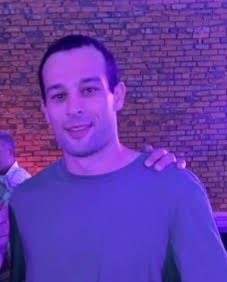 Jason Lynch
Jason Lynch
Tuesday, November 21, 2023
Towne 225/Raisler Lounge
Gate-Tunable Optical Anisotropy in Highly-Aligned Single-Walled Carbon Nanotubes
Bio: Jason is a 3rd year PhD student in Deep Jariwala’s group. His research interests are in using low-dimensional semiconductors for electro-optical applications. He graduated with a B.S. in Physics from the University of Chicago in 2019 and a M.S. in Nanotechnology from Penn in 2021.
Read Jason's Abstract
Telecommunications and polarimetry both require the active control of the polarization of light. Currently, this is done by combining intrinsically anisotropic materials with tunable isotropic materials into heterostructures using complicated fabrication techniques due to the lack of scalable materials that possess both properties. Tunable birefringent and dichromic materials are scarce and rarely available in high-quality thin films over wafer scales. Recently, we reported semiconducting, highly aligned, single-walled carbon nanotubes (SWCNTs) over 4” wafers with normalized birefringence and dichroism values of 0.09 and 0.58, respectively. The real and imaginary parts of the refractive index of these SWCNT films are tuned by up to 5.9% and 14.3% in the infrared at 2200 nm and 1660 nm, respectively, using electrostatic doping. Our results suggest that aligned SWCNTs are among the most anisotropic and tunable optical materials known and opens new avenues for their application in integrated photonics and telecommunications.
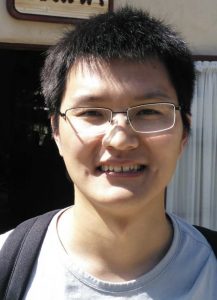 Dongsheng Ding
Dongsheng Ding
Tuesday, November 28, 2023
Towne 225/Raisler Lounge
Constrained Policy Optimization: A Tale of Regularization and Optimism
Bio: Dongsheng Ding is a Postdoctoral Researcher in the Department of Electrical and Systems Engineering at the University of Pennsylvania. He received his Ph.D. in Electrical Engineering from the University of Southern California. His research interest lies in developing reinforcement learning approaches for learning to control constrained and multi-agent dynamical systems.
Read Dongsheng's Abstract
In contemporary reinforcement learning, constrained policy optimization is a prominent methodology for finding optimal policies under constraints. Its applications span diverse domains, ranging from robot navigation to cancer screening. However, the challenge of oscillating policy iterates in training due to the minimax structure within Lagrangian-based policy gradient methods poses a significant hurdle. To mitigate this oscillation, this talk first introduces regularization into Lagrangian-based constrained minimax optimization and presents a regularized policy gradient-based primal-dual method with sublinear convergence of policy iterates to an optimum. Next, this talk introduces optimism from learning in games to develop an optimistic gradient-based primal-dual method. This method demonstrates remarkable linear convergence of policy iterates to an optimum, showcasing the effectiveness of optimism even in scenarios where the minimax optimization lacks convexity. Ultimately, our results shed light on the role of regularization and optimism in mitigating oscillation in constrained policy learning.
Spring 2023 Series
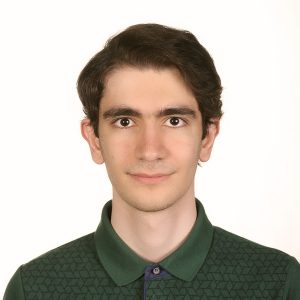 Behrad Moniri
Behrad Moniri
Tuesday, February 14, 2023
Towne 225/Raisler Lounge
(Deep) Neural Networks under Distribution Shift
Bio: Behrad is a PhD student in the Department of Electrical and Systems Engineering at the University of Pennsylvania, supervised by Professor Hamed Hassani. His current research interests are deep learning theory, mean-field asymptotics, and information theory. Behrad received his B.Sc. degree in Electrical Engineering from the Sharif University of Technology in 2020 with highest distinctions.
Read Behrad's Abstract
In this talk, we will first introduce two simple statistical models: high-dimensional linear regression and random features regression. Next, we will demonstrate that despite their simplicity, these models offer valuable insights into some of the most puzzling behaviors of deep neural networks, such as double descent and feature learning. Finally, we will investigate distribution shifts in random features models to demystify the recently observed phenomena of accuracy-on-the-line and agreement-on-the-line in deep neural networks.
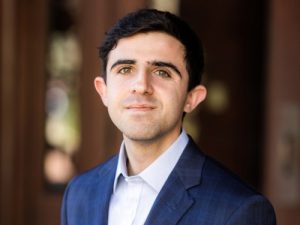 Nima Leclerc
Nima Leclerc
Thursday, February 23, 2023
Towne 225/Raisler Lounge
An automated quantum control infrastructure for silicon quantum processors
Bio: Nima Leclerc is a PhD student and Dean’s Fellow in electrical engineering at the University of Pennsylvania. His research focuses on the development of scalable silicon-based quantum processors with applications in efficient drug and protein design. Leclerc graduated with a BS in materials science and engineering from Cornell University in 2020. Prior to Penn, he worked at Caltech, Lawrence Berkeley National Laboratory, and startup companies PsiQuantum and Kepler, developing next-generation quantum technologies. He is also the founder and president of the Penn Quantum Engineering Graduate Association.
Read Nima's Abstract
Quantum computers promise to revolutionize nearly every aspect of society through drug development, materials discovery and optimization, and the exponential speedup of certain computational tasks. However, current devices do not have sufficient numbers of qubits (quantum bits) or high enough control fidelities (accuracies) for fault-tolerant quantum computing. Silicon quantum dot (QD) qubits have long coherence times on the order of milliseconds, small feature sizes, and are compatible with standard semiconductor fabrication technologies making them a very promising candidate for intermediate scale quantum computing. Here, we present silicon QD devices and an in-house quantum control infrastructure. This talk presents our general framework for automated single and two-qubit gate calibration necessary for advanced gate optimization protocols using a custom hardware-software stack. Demonstrating single and 2-qubit gates exceeding fault-tolerant fidelities (>99 %) in silicon quantum processors is necessary for a general-purpose quantum computator. We present a systematic approach to identify and suppress noise sources using optimized microwave pulse shapes and magnetic fields.
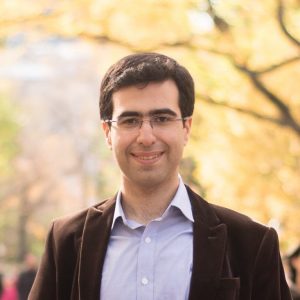 Navid NaderiAlizadeh
Navid NaderiAlizadeh
Tuesday, March 14, 2023
Towne 225/Raisler Lounge
Machine Learning for Autonomous Wireless Networks
Bio: Navid NaderiAlizadeh is a Postdoctoral Researcher in the Department of Electrical and Systems Engineering at the University of Pennsylvania. He received the B.S. degree in electrical engineering from Sharif University of Technology, Tehran, Iran, in 2011, the M.S. degree in electrical and computer engineering from Cornell University, Ithaca, NY, USA, in 2014, and the Ph.D. degree in electrical engineering from the University of Southern California, Los Angeles, CA, USA, in 2016. Prior to UPenn, Navid spent four years as a Research Scientist at Intel Labs and HRL Laboratories. His research interests span machine learning, optimization, signal processing, and information theory, and their applications for resource allocation in wireless networks. In addition to serving as a TPC member of several IEEE conferences, Navid has served as an Associate Editor for the IEEE Journal on Selected Areas in Communications and as a Guest Editor for the IEEE IoT Magazine. He has also been a Co-Organizer of the IEEE SPAWC 2021 Special Session on the “Interplay between Machine Learning and Resource Management in Wireless Networks” and the MLSys 2023 Workshop on “Resource-Constrained Learning in Wireless Networks.” Navid ranked first in the Iranian Nationwide University entrance exam in 2007. He was a recipient of the Jacobs Scholarship in 2011. He was selected as a 2015-16 Ming Hsieh Institute Ph.D. Scholar. He was also a finalist in the Shannon Centennial Student Competition at Nokia Bell Labs in 2016.
Read Navid's Abstract
Future wireless networks are envisioned to be highly-complex, large-scale systems. To effectively manage the resources within these networks, it is necessary to tackle challenging, high-dimensional constrained optimization problems. Instead of relying on heuristic solutions, data-driven methods that leverage machine learning can be employed to learn superior wireless resource allocation algorithms. However, achieving autonomy in wireless networking requires the development of learning-based solutions that respect performance constraints, are able to handle the irregular data structure of wireless networks, and adapt to unexpected situations. In this talk, I present methods at the intersection of constrained optimization, graph representation learning, and network information theory, which enable wireless network management solutions that provide performance guarantees, transfer to arbitrary network sizes and topologies, adjust to unforeseen circumstances, and perform well with limited training data.
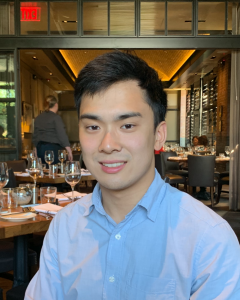 Eric Lei
Eric Lei
Thursday, April 6, 2023
Towne 225/Raisler Lounge
On a Relation Between Rate-Distortion Theory and Optimal Transport
Bio: Eric is a 3rd-year PhD student in ESE, advised by Shirin Saeedi Bidokhti and Hamed Hassani. His research interests are in neural compression, information theory, and deep generative models. Previously, he received his bachelor’s degree from Cornell University in electrical and computer engineering.
Read Eric's Abstract
We discuss a relationship between rate-distortion and optimal transport (OT) theory, even though they seem to be unrelated at first glance. In particular, we show that a function defined via an extremal entropic OT distance is equivalent to the rate-distortion function. We numerically verify this result, as well as previous results that connect non-entropic OT to optimal scalar quantization. Thus, we unify solving scalar quantization and rate-distortion functions in an alternative fashion by using their respective optimal transport solvers.
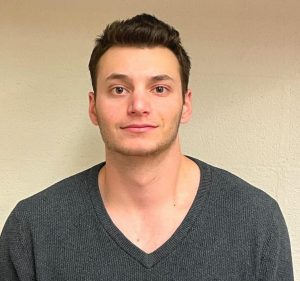 Adam Alfieri
Adam Alfieri
Thursday, April 6, 2023
Towne 225/Raisler Lounge
Broadband Near-Perfect Light Absorption in 2D Material-based Metasurfaces
Bio: Adam is a 3rd year PhD student in Electrical and Systems Engineering in Prof. Deep Jariwala’s group. He graduated in 2020 with a B.S. in Materials Science and Engineering from University of Wisconsin-Madison (Go Badgers). His research interests focus on strong light-matter interaction for solar energy harvesting in ultrathin geometries. Adam has not received any honors or awards at any point in his personal or professional life but thinks it would be cool to do so eventually.
Read Adam's Abstract
Broadband perfect absorption in the visible (VIS) to near-infrared (NIR) range is important for solar energy harvesting, photodetection, stealth, and imaging systems. Achieving strong absorption in thin structures is necessary for lightweight devices with lower cost, flexibility, and versatility. In this talk, I’ll explain the fundamentals and challenges of light absorption in ultrathin geometries. I will further discuss the benefits of high index, high loss van der Waals dielectrics as alternatives to traditional absorber materials. Finally, I will discuss how nanophotonic effects in arrays of nanostructures made from a high index van der Waals material enable absorption of 97% of solar radiation in the VIS-NIR range.
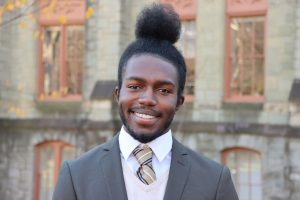 Malakhi Hopkins
Malakhi Hopkins
Thursday, April 20, 2023
Towne 225/Raisler Lounge
Depth-and-Ultrasonic-Based Fusion for Collaborative Mapping with Heterogeneous Multi-Robot Systems in Indoor Environments
Bio: Malakhi is a 3rd-year PhD student in ESE, advised by Dr. Vijay Kumar. His research is in Multi-Robot Systems, focusing on aerial robots. Malakhi received his Bachelor’s degree in Computer Engineering from the University of Maryland, Baltimore County in 2020.
Read Malakhi's Abstract
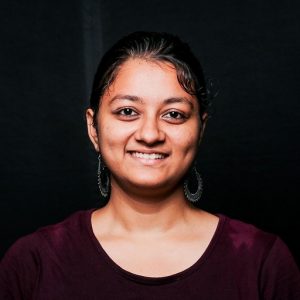 Anusha Srikanthan
Anusha Srikanthan
Tuesday, May 2, 2023
Towne 225/Raisler Lounge
From Packing to Proofs: Isoperimetry and Talagrand’s Inequality for optimizing Bin Packing Efficiency
Bio: Anusha Srikanthan is pursuing her PhD in Electrical and Systems Engineering as a part of the GRASP lab advised byDr. Nikolai Matni and co-advised by Dr. Vijay Kumar. She is working at the intersection of robotics, optimization and learning for dynamics and control. Her current research interests are in deriving a principled approach to hierarchical planning and control for under-actuated robotic systems. She completed her Masters Thesis at Georgia Institute of Technology, advised by Dr. Harish Ravichandar and Dr. Sonia Chernova. The focus of her thesis was on the design of algorithms for learning implicit task requirements for multi-agent task allocation using data from expert demonstrations.
Read Anusha's Abstract
Isoperimetry and Talagrand’s inequality for concentration of measure have been powerful tools in probability theory with widespread applications. In today’s tutorial form talk, we will explore one of the applications called the bin-packing problem, which is a classical problem in computer science known to be NP-hard. The problem is as follows: given a set of indivisible items with different sizes and a set of bins with a fixed capacity, how can we pack the items into the bins in the most efficient way possible? This problem has numerous real-world applications, including logistics, manufacturing, and resource allocation. In this tutorial, we will start by discussing the importance of the bin-packing problem and discover how Talagrand’s concentration of measure is used to obtain tighter estimates on the packing efficiency. Finally, we will discuss the implications of these results for the analysis of heuristic and approximation algorithms.
Fall 2022 Series
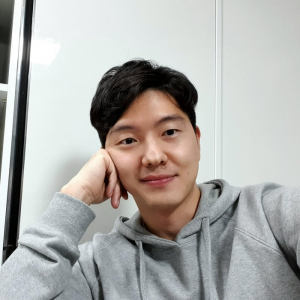 DJ Park
DJ Park
Wednesday, October 19, 2022
Towne 225/Raisler Lounge
Fast and Flexible FPGA development
Bio: DJ Park is a PhD student in the Implementation of Computation group, advised by Prof. André DeHon. He received his B.S. in Electrical and Computer Engineering at Carnegie Mellon University. He also has experience as a SoC engineer in industry. His research interests include FPGAs and Partial Reconfiguration.
Read DJ's Abstract
FPGA (Field-Programmable-Gate-
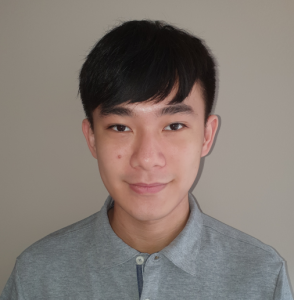 Thomas Zhang
Thomas Zhang
Wednesday, November 2, 2022
Towne 225/Raisler Lounge
Distribution shift in imitation learning and how to control it
Bio: Thomas Zhang is a 3rd-year PhD student advised by Prof. Nikolai Matni. His research interests involve some hodge podge of dynamical systems, statistical learning, and control theory. In particular, he is interested in studying the properties of learning-based methods applied on non-i.i.d. data generated by dynamical (control) systems. Prior to Penn, Thomas received BSc’s in Mathematics and Statistics & Data Science from Yale University, where he then spent a year as a research scientist in the Applied Mathematics Program.
Read Thomas's Abstract
In this talk, we will set up the imitation learning problem in the context of continuous control, and demonstrate how distribution shift fundamentally hinders out-of-the-box attempts at establishing provable generalization guarantees. Therefore, the key statistical learning problem we want to answer is: “when does low training error along the expert’s trajectory imply low test error on the learned trajectory?” We will then show how nailing down a notion of an expert demonstrator’s ability to recover from small errors translates to a sufficient condition for controlling the distribution shift. This naturally leads to the introduction of TaSIL: Taylor Series Imitation Learning. We will show why, in addition to standard regression on the expert’s outputs, regression on the expert’s higher order derivatives naturally pops up as a way to provably mitigate distribution shift.
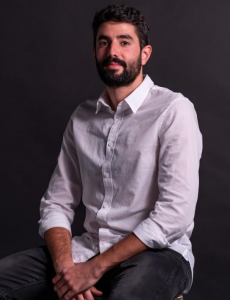 Juan Cervino
Juan Cervino
Wednesday, November 2, 2022
Towne 225/Raisler Lounge
Learning globally smooth functions on manifolds
Bio: Juan received the B.Sc. degree in electrical engineering from the Universidad de la Republica Oriental del Uruguay, Montevideo, in 2018. He is now a PhD student in the Department of Electrical and Systems Engineering at the University of Pennsylvania, supervised by Professor Alejandro Ribeiro. Juan’s current research interests are in machine learning, optimization and control.
Read Juan's Abstract
Smoothness and low dimensional structures play central roles in improving generalization and stability in learning and statistics. The combination of these properties has led to many advances in semi-supervised learning, generative modeling, and control of dynamical systems. However, learning smooth functions is generally challenging, except in simple cases such as learning linear or kernel models. Typical methods are either too conservative, relying on crude upper bounds such as spectral normalization, too lax, penalizing smoothness on average, or too computationally intensive, requiring the solution of large-scale semi-definite programs. These issues are only exacerbated when trying to simultaneously exploit low dimensionality using, e.g., manifolds. This work proposes to overcome these obstacles by combining techniques from semi-infinite constrained learning and manifold regularization. To do so, it shows that, under typical conditions, the problem of learning a Lipschitz continuous function on a manifold is equivalent to a dynamically weighted manifold regularization problem. This observation leads to a practical algorithm based on a weighted Laplacian penalty whose weights are adapted using stochastic gradient techniques. We prove that, under mild conditions, this method estimates the Lipschitz constant of the solution, learning a globally smooth solution as a byproduct. Numerical examples illustrate the advantages of using this method to impose global smoothness on manifolds as opposed to imposing smoothness on average.
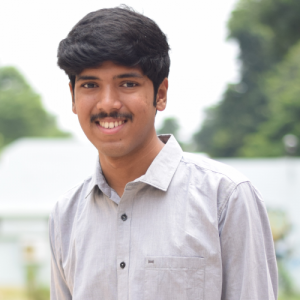 Farhad Nawaz
Farhad Nawaz
Wednesday, November 16, 2022
Towne 225/Raisler Lounge
The Traveling Salesman Problem and Space-Filling Curves
Bio: Farhad Nawaz is a 2nd year Ph.D. student in the GRASP lab advised by Dr. Nikolai Matni. His research interests include control and learning theory for dynamical systems. In particular, he is interested in exploring efficient and robust planning and learning strategies for robotic tasks. Before joining Penn, he received a Master’s degree in Aerospace Engineering from the University of Illinois Urbana-Champaign, where he worked on planning algorithms for multi-agent systems operating in uncertain and stochastic environments.
Read Farhad's Abstract
In this talk, I will present the routing of vehicles to various delivery points as the Travelling salesman problem (TSP), which is a widely studied NP-hard problem in combinatorial optimization. I will discuss a practical heuristic for the TSP that was implemented in a routing system for food delivery. The heuristic algorithm is based on space-filling curves — a mathematical construction that generates a path to cover a planar region. I will also skim through the analysis of how the space-filling curves and a concentration inequality demonstrate that the length of the optimal tour is approximately constant.
Spring 2022 Series
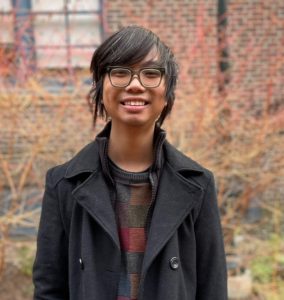 Alex Nguyen-Le
Alex Nguyen-Le
Friday, March 4, 2022
Wu & Chen Auditorium
Fast Discovery of Latent Switching States
Bio: Alex Nguyễn-Le is a second year PhD student currently advised by Victor Preciado. He received a BS in Electrical Engineering from UCSB in 2017, worked in the pharmaceutical industry for Roche, and subsequently returned to UCSB for a MS in Electrical Engineering which he received in 2020. His research interests primarily center around Optimization, Control, and Neuroscience.
Read Alex's Abstract
Many signals can be reasonably characterized by a small number of dominant modes that produce time-evolving behaviors, and identifying these modes is paramount to modeling systems simply. In this work, we present some algorithms and heuristics that enable discovery of these modes. Theoretical properties of the algorithms are explored and validation of its effectiveness is demonstrated on synthetic data. Finally, we combine our algorithm with heuristic techniques to discover latent states in neurological time series gathered from epileptic patients; despite the perceived complexity of neural systems, we demonstrate that the signals associated with seizures can be described by relatively few dominant modes.
 Robert Broberg
Robert Broberg
Friday, April 15, 2022
Wu & Chen Auditorium
Quantum Networking: Why, What and How
Bio: Robert entered the networking industry in 1984 as a test engineer. During his 38 year career in what became the internet industry he installed the first TCP/IP NIC at Berkeley University, developed the first interoperable TCP/IP NICs, Mainframe Channel attach and X.25 gateways for the Japanese market, led the installation of the first trans-Atlanic IP fiber link, and ran a number of applied academic research projects. 5 years ago he was introduced to quantum networking and has since come to Penn to learn about quantum light/matter interfaces.
Read Robert's Abstract
Over the past ~40 years the internet’s hyperexponential growth was enabled by factors such as coexistence with telecommunications infrastructure, interoperability and the ability to scale. Quantum networks have shown coexistence with internet infrastructure but interoperability has not been demonstrated; scaling of geographically distributed Hilbert spaces has no digital analogue. We introduce these topics and discuss an Atomic Ensemble network under development at Stony Brook University and a Diamond Vacancy center network under development at TU-Delft.
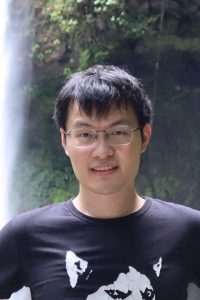 Shaoru Chen
Shaoru Chen
Friday, April 22, 2022
Wu & Chen Auditorium
Bridging Learning and Control with Safety Guarantees
Bio: Shaoru Chen is a Ph.D. candidate at the University of Pennsylvania in the Department of Electrical and Systems Engineering, working with Prof. Victor M. Preciado. Prior to his Ph.D., he received a B.E. degree in Automation from Zhejiang University, China. His research focuses on safe learning for control with his work spanning neural network verification, safety analysis of learning-enabled systems, and robust model predictive control.
Read Shaoru's Abstract
Learning-enabled systems are emerging in many real-world applications where learning modules such as deep neural networks are deployed as feedback controllers, perception modules, or motion planners in complex dynamical systems. Providing formal safety guarantees for such systems is crucial since neural networks can behave in unexpected ways under small input perturbation and cause the closed-loop system to be unsafe. Due to the coupling between nonlinear dynamics and complex, large-scale learning modules, providing formal guarantees for learning-enabled systems is challenging and calls for the development of new theoretical and computational frameworks on the interface between machine learning, control, and optimization.
My research focuses on designing numerically efficient tools for providing formal guarantees for learning-enabled systems. In this talk, I will discuss how control-theoretic analysis and machine learning can be combined to address this challenge by solving hierarchical problems including (1) scalable verification of neural network input-output properties, (2) closed-loop reachability and stability analysis of neural network controlled systems, and (3) robust model predictive control of uncertain dynamical systems with safety guarantees. At the end of the talk, I will discuss how the research on the above three problems can complement each other and relate to broader research areas.
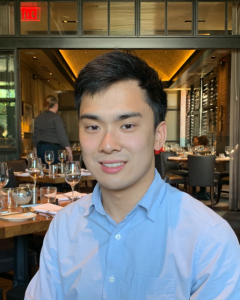 Eric Lei
Eric Lei
Friday, April 29, 2022
Towne 337
Neural Estimation of the Rate-Distortion Function With Applications to Operational Source Coding
Bio:Eric is a 2nd-year Ph.D. student at University of Pennsylvania in the electrical and systems engineering department, advised by Shirin Saeedi Bidokhti and Hamed Hassani, and supported by the NSF Graduate Research Fellowship. Previously, he received his B.S. in electrical and computer engineering at Cornell University in 2020. His current research interests are in data compression, information theory, and machine learning.
Read Eric's Abstract
A fundamental question in designing lossy data compression schemes is how well one can do in comparison with the rate-distortion function, which describes the known theoretical limits of lossy compression. Motivated by the empirical success of deep neural network (DNN) compressors on large, real-world data, we investigate methods to estimate the rate-distortion function on such data, which would allow comparison of DNN compressors with optimality. While one could use the empirical distribution of the data and apply the Blahut-Arimoto algorithm, this approach presents several computational challenges and inaccuracies when the datasets are large and high-dimensional, such as the case of modern image datasets. Instead, we reformulate the rate-distortion objective, and solve the resulting functional optimization problem using neural networks. We show that the resulting rate-distortion estimator, called NERD, is a strongly consistent estimator, and provide evidence that NERD can accurately estimate the rate-distortion function on popular image datasets. Using our estimate, we show that the rate-distortion achievable by DNN compressors are within several bits of the rate-distortion function for real-world datasets. Additionally, NERD provides access to the rate-distortion achieving channel, as well as samples from its output marginal. Therefore, using recent results in reverse channel coding, we describe how NERD can be used to construct an operational one-shot lossy compression scheme with guarantees on the achievable rate and distortion. Experimental results demonstrate competitive performance with DNN compressors.
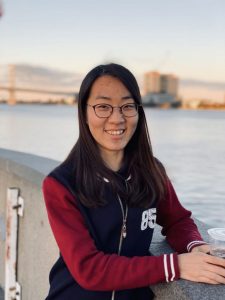 Zhiyang Wang
Zhiyang Wang
Friday, May 6, 2022
Wu & Chen Auditorium
Learning Decentralized Wireless Resource Allocations with Graph Neural Networks
Bio: Zhiyang is a 3rd-year Ph.D. student at the University of Pennsylvania in the Electrical and Systems Engineering Department, advised by Alejandro Ribeiro. Previously, she received B.E. and M.E. degrees in 2016 and 2019 respectively, from the Department of Electronic Engineering and Information Science, University of Science and Technology of China. She has been working on the use of graph neural networks to design algorithms for distributed allocation of resources in wireless communication networks. More recently, she is working on analyses of the limits of graph neural networks when graphs are sampled from manifolds.
Read Zhiyang's Abstract
Fall 2021 Series
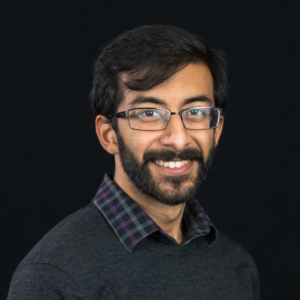 Harshat Kumar
Harshat Kumar
Friday, October 1, 2021
Wu & Chen Auditorium
Zeroth-order Deterministic Policy Gradient
Bio: Harshat Kumar received the B.S. degree in electrical and computer engineering from Rutgers University in 2017 and MS degree in Robotics from the University of Pennsylvania in 2019. He has been working toward the Ph.D. in electrical and systems engineering at University of Pennsylvania, Philadelphia, PA, USA, since August 2017.
Read Harshat's Abstract
Deterministic Policy Gradient (DPG) removes a level of randomness from standard randomized-action Policy Gradient (PG), and demonstrates substantial empirical success for tackling complex dynamic problems involving Markov decision processes. At the same time, though, DPG loses its ability to learn in a model-free (i.e., actor-only) fashion, frequently necessitating the use of critics in order to obtain consistent estimates of the associated policy-reward gradient. In this work, we introduce Zeroth-order Deterministic Policy Gradient (ZDPG), which approximates policy-reward gradients via two-point stochastic evaluations of the -function, constructed by properly designed low-dimensional action-space perturbations. Exploiting the idea of random horizon rollouts for obtaining unbiased estimates of the -function, ZDPG lifts the dependence on critics and restores true model-free policy learning, while enjoying built-in and provable algorithmic stability. Additionally, we present new finite sample complexity bounds for ZDPG, which improve upon existing results by up to two orders of magnitude. Our findings are supported by several numerical experiments, which showcase the effectiveness of ZDPG in a practical setting, and its advantages over both PG and Baseline PG.
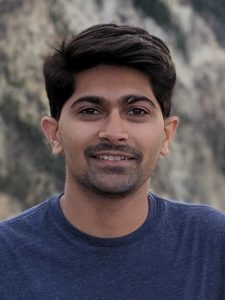 Raj Patel
Raj Patel
Friday, October 8, 2021
Wu & Chen Auditorium
Probing the Optical Dynamics of Quantum Emitters in Hexagonal Boron Nitride
Bio: Raj received his M.Sc. in Physics and B.E. in Mechanical Engineering from BITS Pilani – Goa, India in 2015. He received an M.S.E. in Materials Science & Engineering from University of Pennsylvania in 2017. He is now pursuing his Ph.D. in Electrical & Systems Engineering, where he works in the Quantum Engineering Laboratory, advised by Prof. Lee Bassett. His research interests are in understanding spin-based quantum emitters in two-dimensional materials and other solid-state systems for quantum sensing and computation applications.
Read Raj's Abstract
Hexagonal boron nitride (h-BN) is a van der Waals material that hosts defect-based quantum emitters (QEs) at room temperature. Recent observations suggest the existence of multiple distinct defect structures hosting QEs. Theoretical proposals suggest vacancies, their complexes and substitutional atoms as likely defect candidates. However, experimental identification of the QEs’ electronic structure is lacking, and key details of the QEs’ charge and spin properties remain unknown. In this talk, we discuss probing the optical dynamics of QEs in h-BN using photon emission statistics and photoluminescence spectroscopy with the goal of predicting the electronic level structure. We probe the optical dynamics of the QEs at various excitation powers and wavelengths and propose an electronic level structure which could give rise to the experimental observations.
 Juan Cervino
Juan Cervino
Friday, October 15, 2021
Wu & Chen Auditorium
Increase and Conquer: Training Graph Neural Networks in Growing Graphs
Bio: Juan received the B.Sc. degree in electrical engineering from the Universidad de la Republica Oriental del Uruguay, Montevideo, in 2018. He is now a PhD student in the Department of Electrical and Systems Engineering at the University of Pennsylvania, supervised by Professor Alejandro Ribeiro. Juan’s current research interests are in machine learning, optimization and control.
Read Juan's Abstract
Graph neural networks (GNNs) use graph convolutions to exploit network invariances and learn meaningful features from network data. However, on large-scale graphs convolutions incur in high computational cost, leading to scalability limitations. Leveraging the graphon — the limit object of a graph — in this paper we consider the problem of learning a graphon neural network (WNN) — the limit object of a GNN — by training GNNs on graphs sampled Bernoulli from the graphon. Under smoothness conditions, we show that: (i) the expected distance between the learning steps on the GNN and on the WNN decreases asymptotically with the size of the graph, and (ii) when training on a sequence of growing graphs, gradient descent follows the learning direction of the WNN. Inspired by these results, we propose a novel algorithm to learn GNNs on large-scale graphs that, starting from a moderate number of nodes, successively increases the size of the graph during training. This algorithm is benchmarked on both a recommendation system and a decentralized control problem where it is shown to retain comparable performance, to its large-scale counterpart, at a reduced computational cost.
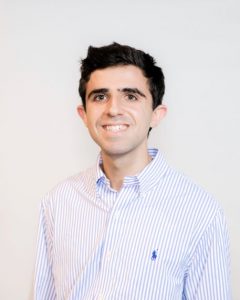 Nima Leclerc
Nima Leclerc
Friday, October 22, 2021
Wu & Chen Auditorium
High fidelity single and two-qubit gates in silicon quantum processors
Bio: Nima Leclerc received his BS in Materials Science and Engineering and a minor in Computer Science at Cornell University in 2020. He is currently a PhD student in Electrical Engineering at the University of Pennsylvania in Anthony Sigillito’s group, working on improved quantum control and fabrication of spin-based quantum computers. His research interests intersect condensed matter physics, quantum control, machine learning, and optimization. He is also a 2021-2022 Graduate Associate at Penn’s Perry World House, developing policy around the national security threats of emerging quantum technologies.
Read Nima's Abstract
Quantum computers promise to revolutionize nearly every aspect of society through drug development, materials discovery and optimization, and the exponential speedup of certain computational tasks. However, current devices do not have sufficient numbers of qubits (quantum bits) or high enough control fidelities (accuracies) for fault-tolerant quantum computing. Silicon quantum dot (QD) qubits have long coherence times on the order of milliseconds, small feature sizes, and are compatible with standard semiconductor fabrication technologies making them a very promising candidate for intermediate scale quantum computing. Here, we present approaches leading to high-fidelity quantum control in silicon quantum dot processors by fabricating devices resilient to charge noise and developing numerically optimized control protocols. Demonstrating single and 2-qubit gates exceeding fault-tolerant fidelities (>99 %) is necessary for general-purpose quantum computation and is currently an active area of research. Two effects that lead to infidelity are noise and decoherence, this work will address the former. We present a systematic approach to identify and suppress noise sources using optimized microwave pulse shapes and magnetic fields. Significant work over the past decade has been dedicated to fabricating high-quality silicon devices in a scalable manner and developing proof-of-concept protocols for single and 2-qubit gates, but their control fidelities remain significantly below the fault-tolerant thresholds. This work bridges this gap to achieve universal quantum computing in silicon above the fault-tolerant threshold by developing a set of techniques for high-fidelity quantum operations using new device architectures and optimized control pulses.
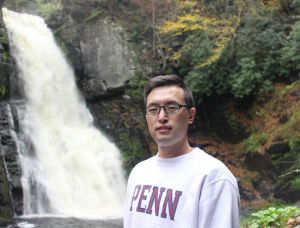 Yuanlong Xiao
Yuanlong Xiao
Friday, October 29, 2021
Wu & Chen Auditorium
Software-like Fast FPGA Compilation
Bio: Yuanlong Xiao received his Master’s Degree in Microelectronics from Fudan University, China in 2017 and Bachelor’s degree in Microelectronics from Sun Yat-sen University, China in 2014. His research interest is quick computing mapping, reconfigurable computing, and FPGA chip design. He is now a Ph.D. student at the University of Pennsylvania advised by Prof. Andre’ DeHon.
Read Yuanlong's Abstract
FPGA-based accelerators are demonstrating significant absolute performance and energy efficiency compared with general-purpose CPUs. While FPGA computations can now be described in the standard, programming languages, like C, development for FPGA accelerators remains tedious and inaccessible to modern software engineers. Slow compiles (potentially taking tens of hours) inhibit the rapid, incremental refinement of designs that is the hallmark of modern software engineering. To address this issue, we introduce separate compilation and linkage into the FPGA design flow, providing faster design turns more familiar to software development. To realize this flow, we provide abstractions, compiler options, and compiler flow that allow the same C source code to be compiled to processor cores in seconds and to FPGA regions in minutes, providing the missing -O0 and -O1 options familiar in software development. This raises the FPGA programming level and standardizes the programming experience, bringing FPGA-based accelerators into a more familiar software platform ecosystem for software engineers.
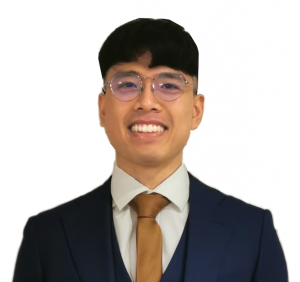 Duc Nguyen
Duc Nguyen
Friday, November5 , 2021
Wu & Chen Auditorium
Sums-of-squares and the proof-to-algorithm paradigm
Bio: Duc Nguyen is a 3rd year Ph.D. candidate in the Computer & Information System department of the University of Pennsylvania. He is advised by Prof. Shivani Agarwal. His research interests are in statistical machine learning and learning to rank.
Read Duc's Abstract
In recent years, the intersection between proof systems and algorithmic design has received a lot of interest within the computer science community. One of these proof systems, the sums-of-square hierarchy, has been applied with great success to many long standing problems in theoretical computer science and machine learning such as learning and clustering a mixture of Gaussians, matrix and tensor completion, etc. At the core lies a relatively straightforward but powerful idea: if there exists a sums-of-squares proof of a polynomial inequality, there exists a polynomial-time algorithm to find such a proof. In this talk, we will explore the basic foundations of the sums-of-squares proof system from a user’s point of view.
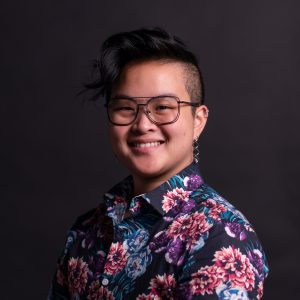 Tzu-Yung Huang
Tzu-Yung Huang
Friday, November 12 , 2021
Wu & Chen Auditorium
Material Retention Analysis using Dynamic Light Scattering and UV-vis Spectroscopy
Bio: Originally from Taipei, Taiwan, Yung received their B.S.E. in Electrical Engineering from Princeton University in 2015. Their undergraduate research focused on the environmental and biomedical applications of quantum cascade lasers, and on the development of GaN as novel materials for quantum cascade emitters. Since joining the Quantum Engineering Laboratory at Penn, they have shifted towards exploring the potential of bulk and nano diamonds as platforms for integrated devices. By leveraging advances in nanophotonics design and fabrication, as well as collaborations with Prof. Aflatouni’s and Porf. Tsourkas’ groups at Penn, Yung’s current research focuses on realizing novel architectures for compact, diamond-based quantum devices for applications in quantum communication and sensing.
Read Tzu-Yung's Abstract
Nanoparticles are emerging platforms for quantum sensing and targeted nanomedicine. Advances in integrated quantum sensors and functionalized nanoparticles have catalyzed a demand for colloidal nanoparticle devices and systems. Extraction of particle information, such as size, presence of agglomeration, and concentration, is an essential step in developing new protocols and processes for novel colloidal devices. However, existing characterization methods either require large amounts of source material, have material restrictions, or are destructive against the process being assessed. Here, we present an analytical method for evaluating change in total mass using dynamic light scattering and UV-vis measurements. We demonstrate the effectiveness of this method for dielectric and metallic nanoparticles and verify the results using ion-coupled plasma mass spectroscopy.
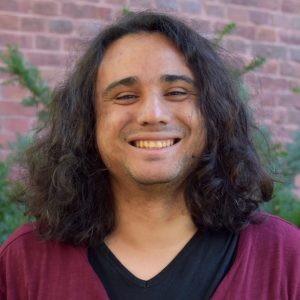 Alp Aydinoglu
Alp Aydinoglu
Friday, November 19 , 2021
Wu & Chen Auditorium
Control of Multi-Contact Systems
Bio: Alp completed his B.S. in Control Engineering from Istanbul Technical University in 2017 and is currently pursuing his Ph.D. in Penn working with Michael Posa. His research emphasizes control of multi-contact systems.
Read Alp's Abstract
Many robotic tasks, like manipulation and locomotion, fundamentally include making and breaking contact with the environment. However, state-of-the-art control policies struggle to deal with the hybrid nature of multi-contact motion. Such controllers often rely heavily upon heuristics or, due to the combinatorial structure in the dynamics, are unsuitable for real-time control. A subset of controllers, such as neural network controllers, can achieve satisfactory performance but they lack guarantees. In this talk, I will present techniques for overcoming these challenges in order to design controllers and verify stability of multi-contact systems.
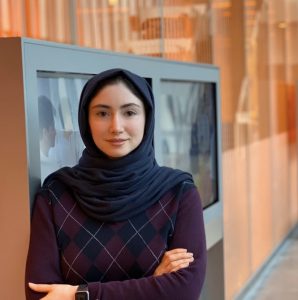 Asma Fallah
Asma Fallah
Friday, December 3 , 2021
Wu & Chen Auditorium
Nonreciprocity via Interaction of Electromagnetic Waves with Swift Electron Beams
Bio: Asma received her BSc degree in electrical engineering from University of Tehran, Iran in 2016. She is now a fourth-year Ph.D. student in Prof. Engheta group, in ESE department at the University of Pennsylvania. Her research interest are electromagnetic, wave matter interaction, and metamaterial.
Read Asma's Abstract
Breaking the reciprocity of electromagnetic interactions is of paramount importance in photonic and microwave technologies, as it enables unidirectional power flow and other unique electromagnetic phenomena. We have explored a novel method to break the reciprocity of electromagnetic guided waves utilizing an electron beam with a constant velocity. We theoretically explore the break of electromagnetic reciprocity in the presence of swift electron beams in different scenarios, including the interaction of the electron beams with guided and radiated waves, providing the possibility for strong nonreciprocal behavior.
Spring 2020 Series - Archive
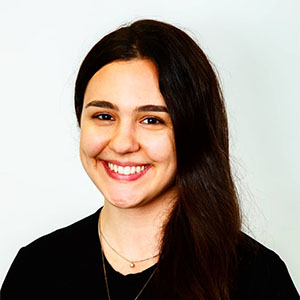 Luana Rubini Ruiz
Luana Rubini Ruiz
Wednesday, February 5th, 2020
Towne 337
“Gated Graph Recurrent Neural Networks”
Bio: Luana received the B.Sc. degree in electrical engineering from the University of São Paulo, Brazil, and the M.Sc. degree in electrical engineering from the École Supérieure d’Electricité (now CentraleSupélec), France, in 2017. She is currently a Ph.D. candidate with the Department of Electrical and Systems Engineering advised by Prof. Alejandro Ribeiro. Her research interests are in the fields of graph signal processing and machine learning over network data. She was awarded an Eiffel Excellence scholarship from the French Ministry for Europe and Foreign Affairs between 2013 and 2015 and, in 2019, received a best student paper award at the 27th European Signal Processing Conference.
Read Luana's Abstract
Graph processes consist of sequences of graph signals that vary in time on top of a static graph. They can be used to model data such as climate variables on weather station networks and seismic wave readings on a network of seismographs. Our objective is to introduce a permutation equivariant Graph Recurrent Neural Network (GRNN). GRNNs learn representations of graph processes by taking both their sequential structure and the underlying graph topology into account, while also keeping the number of parameters independent of the length of the sequence and of the size of the graph. The stability of GRNNs to graph perturbations is analyzed, and their architecture is extended to include three gating strategies, which address the problem of vanishing/exploding gradients over time and across paths of the graph. The advantages of the GRNN parametrization are demonstrated in a regression and a classification experiment, where GRNNs outperform both GNNs and RNNs, and time, node and edge gating yield gains in performance in different time and spatial correlation scenarios.
 Harshat Kumar
Harshat Kumar
Wednesday, February 12th, 2020
Towne 337
Sample Complexity of Actor-Critic for Reinforcement Learning
Bio: Harshat Kumar received the B.Sc. degree in electrical and computer engineering from Rutgers University, New Brunswick, NJ, USA, in 2017. He has been working toward Ph.D. in electrical and systems engineering at the University of Pennsylvania, Philadelphia, PA, USA, since August 2017.
Read Harshat's Abstract
Reinforcement learning, mathematically described by Markov Decision Problems, may be approached either through dynamic programming or policy search. Actor-critic algorithms combine the merits of both approaches by alternating between steps to estimate the value function and policy gradient updates. Due to the fact that the updates exhibit correlated noise and biased gradient updates, only the asymptotic behavior of actor-critic is known by connecting its behavior to dynamical systems. This work puts forth a new variant of actor-critic that employs Monte Carlo rollouts during the policy search updates, which results in controllable bias that depends on the number of critic evaluations. As a result, we are able to provide for the first time the convergence rate of actor-critic algorithms when the policy search step employs policy gradient, agnostic to the choice of policy evaluation technique. In particular, we establish conditions under which the sample complexity is comparable to stochastic gradient method for non-convex problems or slower as a result of the critic estimation error, which is the main complexity bottleneck. These results hold for in continuous state and action spaces with linear function approximation for the value function. We then specialize these conceptual results to the case where the critic is estimated by Temporal Difference, Gradient Temporal Difference, and Accelerated Gradient Temporal Difference. These learning rates are then corroborated on a navigation problem involving an obstacle, which suggests that learning more slowly may lead to improved limit points, providing insight into the interplay between optimization and generalization in reinforcement learning.
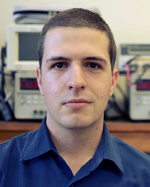 Luiz Chamon
Luiz Chamon
Wednesday, February 19th, 2020
Towne 337
Constrained Statistical Learning
Bio: Luiz Chamon is a Ph.D. candidate in the Department of Electrical and Systems Engineering at the University of Pennsylvania. He received the B.Sc. and M.Sc. degree in electrical engineering from the University of São Paulo, Brazil, in 2011 and 2015 and was an undergraduate exchange student at the Masters in Acoustics of the École Centrale de Lyon, France, in 2009. In 2018, he was recognized by the IEEE Signal Processing Society for his distinguished work for the editorial board of the IEEE Transactions on Signal Processing. His research focuses on optimization theory with applications to signal processing, control, and statistics.
Read Luiz's Abstract
Abstract: Information processing and autonomous systems have become ubiquitous in modern life and as their societal impact increases, so does the need to curtail their behavior. Recent failures of learning-based solutions have shown that, left untethered, they are susceptible to tampering and prone to prejudiced and unsafe actions. Currently, this issue is tackled by leveraging domain expert knowledge to either construct models that embed the desired properties or tune the learning objective so as to promote them. However, the growing scale and complexity of modern information processing and autonomous systems renders this manual behavior tuning infeasible. Already today, explainability, interpretability, and transparency combined with human judgment are no longer enough to design systems that perform according to specifications. This talk therefore proposes to explicitly impose learning constraints instead. It discusses preliminary results and perspectives on the theory of constrained statistical learning that addresses the challenge of solving these statistical and often non-convex constrained problems. Infinite dimensionality and rich finite dimensional representations will be the key ingredients to tackle this issue in practical settings. This general theory can be applied to solve problems involving sparsity, nonlinear modeling, fairness in neural networks, and safe reinforcement learning.
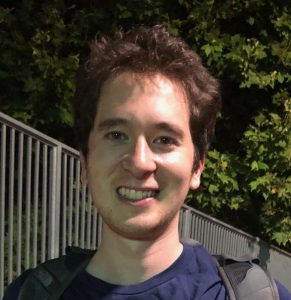 Henry Shulevitz
Henry Shulevitz
Wednesday, February 26th, 2020
Towne 337
Directed Assembly of Quantum Emitters
Bio: Henry received a B.A. from Oberlin College and a B.S from Columbia University in 2017. He is now pursuing a Ph.D. in Electrical Engineering at the University of Pennsylvania, where he is co-advised by Professor Cherie Kagan and Professor Lee Bassett. Henry’s research interests involve the intersections of diamond photonics, plasmonic enhancements and multiparticle assembly with the goal of creating improved quantum device.
Read Henry's Abstract
Quantum technologies have the potential to revolutionize a wide range of fields, from computation to communication and sensing. The physical platforms for developing such technologies, however, remain in their infancy. The nitrogen-vacancy (NV) center in a nanodiamond functions as an optically addressable spin qubits with high levels of environmental sensitivity and room-temperature quantum coherence. Existing methods for synthesizing nanodiamonds yield particles that vary significantly in size and shape. The heterogeneity in nanodiamond morphology affects the quantum properties of the embedded spin qubits in ways that remain poorly understood. Accordingly, these material issues have stymied efforts to incorporate nanodiamonds in photonic structures or multiparticle assemblies. Here, we present work to assembly large area uniform arrays of a nanodiamonds. These templated assemblies provide not only a method for systematically studying nanodiamonds as a quantum material but also offer a method for the fabrication of more complex devices.
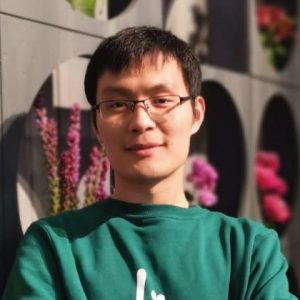
Shaoru Chen
Wednesday, March 4 2020
Towne 337
Robust model predictive control via system level synthesis
Bio: Shaoru Chen received his B.E. degree at Zhejiang University, China in 2017. He is currently a third-year PhD student in the ESE department, University of Pennsylvania, where he is advised by Prof. Victor Preciado. His research interests include data-driven control and nonlinear control.
Read Shaoru's Abstract
We consider the robust model predictive control (MPC) of a linear time-varying (LTV) system with norm bounded disturbances and model uncertainty, wherein a series of constrained optimal control problems (OCPs) are solved. Guaranteeing robust feasibility of these OCPs is challenging, due to both disturbances perturbing the predicted states, and model uncertainty which can render the closed-loop system unstable. As such, a trade-off between the numerical tractability and conservativeness of the solutions is often required. We use the System Level Synthesis (SLS) framework to reformulate these constrained OCPs over closed-loop system responses, and show that this allows us to transparently account for norm bounded additive disturbances and LTV model uncertainty by computing robust state feedback policies. We further show that by exploiting the underlying linear-fractional structure of the resulting robust OCPs, we can significantly reduce the conservatism of existing SLS-based robust control methods.
Fall 2019 Series - Archive
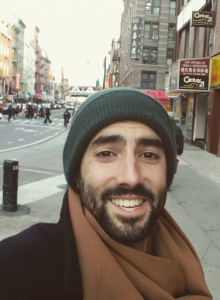 Juan Cervino
Juan Cervino
Wednesday, October 2nd, 2019
Raisler Lounge
“Meta-Learning through Coupled Optimization in Reproducing Kernel Hilbert Spaces”
Bio: Juan received received the B.Sc. degree in electrical engineering from the Universidad de la República Oriental del Uruguay, Montevideo, in 2018. He is now a PhD student in the Department of Electrical and Systems Engineering at the University of Pennsylvania, supervised by Professor Alejandro Ribeiro. Juan’s current research interests are in machine learning, optimization and control.
Read Juan's Abstract
Abstract: In this talk we consider the problem of meta-learning, consisting of building policies that achieve good generalization performance and adapt quickly to different tasks. We introduce meta-learning through the coupled optimization of a set of rewards that are defined for different tasks. This coupling is effected by a projection step that brings the task-specific policies close to a central one which combines the information collected across tasks. While our initial meta-learning formulation is widely general, and connects with state-of-the art strategies, we will focus on the case of reinforcement learning.
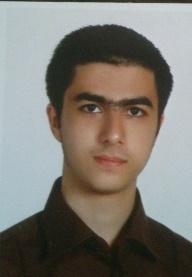 Ehsan Nahvi
Ehsan Nahvi
Wednesday, October 16th, 2019
Raisler Lounge
“Photonic Doping of ENZ Metastructures & Potential Applications”
Bio: Ehsan received his bachelor’s degree in electrical engineering from Sharif University of Technology, Iran in 2016. He is now a fourth year PhD student in the Engheta Lab, in the ESE department at the University of Pennsylvania. His core research projects focus on applications of doped ENZ metastructures, as well as extremely tunable Smith-Purcell radiation from an electron beam moving adjacent to spatio-temporally modulated substrates.
Read Ehsan's Abstract
Abstract: Epsilon-near-zero (ENZ) hosts doped with non-magnetic dielectric inclusions have been shown to exhibit a highly tunable magnetic permeability. In this talk, we discuss how such a peculiar magnetic response may be exploited to realize a broad range of novel functionalities, such as impedance matching, enhanced magnetic nonlinearity, nonlinear absorbers, optical bistability, tunable electric field enhancement.
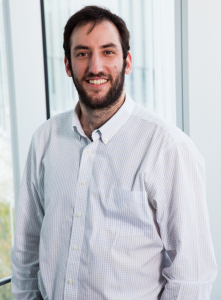 Fernando Gama
Fernando Gama
Wednesday, October 30th, 2019
Raisler Lounge
“Graph Convolutional Neural Networks”
Read Fernando's Abstract
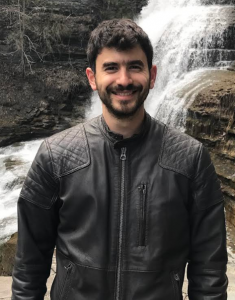 Anastasios Tsiamis
Anastasios Tsiamis
Wednesday, November 6th, 2019
Raisler Lounge
“Finite Sample Analysis of System Identification”
Read Anastasios' Abstract
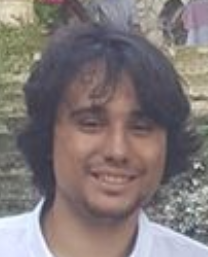 Alp Aydinoglu
Alp Aydinoglu
Wednesday, November 13th, 2019
Raisler Lounge
“Contact-Aware Controller Design for Complementarity Systems”
Read Alp's Abstract
Abstract: While many robotic tasks, like manipulation and locomotion, are fundamentally based in making and breaking contact with the environment, state-of-the-art control policies struggle to deal with the hybrid nature of multi-contact motion. Such controllers often rely heavily upon heuristics or, due to the combinatoric structure in the dynamics, are unsuitable for real-time control. Principled deployment of tactile sensors offers a promising mechanism for stable and robust control, but modern approaches often use this data in an ad hoc manner, for instance to guide guarded moves. In this work, by exploiting the complementarity structure of contact dynamics, we propose a control framework which can close the loop on rich, tactile sensors. Critically, this framework is non-combinatoric, enabling optimization algorithms to automatically synthesize provably stable control policies.
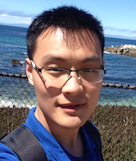 Shaoru Chen
Shaoru Chen
Wednesday, November 20th, 2019
Raisler Lounge
“Safety Verification of Nonlinear Polynomial System via Occupation Measures”
Bio: Shaoru Chen received his Bachelor of Engineering degree in Automation from Zhejiang University, China in 2017. He is now a third-year PhD student in the Department of Electrical and Systems Engineering at the University of Pennsylvania. His research interest is in robust and nonlinear control.
Read Shaoru's Abstract
Abstract: In this talk, we introduce a flexible notion of safety verification for nonlinear autonomous systems by measuring how much time the system spends in given unsafe regions. We consider this problem in the particular case of nonlinear systems with a polynomial dynamics and unsafe regions described by a collection of polynomial inequalities. In this context, we can quantify the amount of time spent in the unsafe regions as the solution to an infinite-dimensional linear program (LP). We approximate the solution to the infinite-dimensional LP using a hierarchy of finite-dimensional semidefinite programs (SDPs). The solutions to the SDPs in this hierarchy provide monotonically converging upper bounds on the optimal solution to the infinite-dimensional LP.
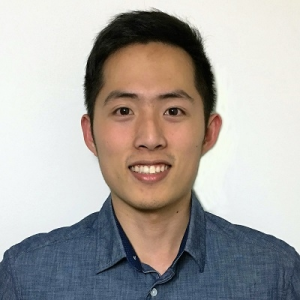 Yu-Ming Chen
Yu-Ming Chen
Wednesday, November 20th, 2019
Raisler Lounge
“Optimal reduced-order modeling of bipedal locomotion”
Bio: Yu-Ming Chen is a PhD student in the Department of Electrical and Systems Engineering at the University of Pennsylvania, supervised by Professor Michael Posa. He has a Bachelor’s degree in Physics from National Taiwan University and a Master’s degree in Robotics from the University of Michigan, Ann Arbor. His interests include legged locomotion, optimization and control.
Read Yu-Ming's Abstract
Abstract: State-of-the-art approaches to legged robots are widely dependent on the use of models like the linear inverted pendulum (LIP) and the spring-loaded inverted pendulum (SLIP), popular because their simplicity enables a wide array of tools for planning, control, and analysis. However, they inevitably limit the ability to execute complex tasks or agile maneuvers. In this work, we aim to automatically synthesize models that remain low-dimensional but retain the capabilities of the high-dimensional system. For example, if one were to restore a small degree of complexity to LIP, SLIP, or a similar model, our approach discovers the form of that additional complexity which optimizes performance. We define a class of reduced-order models and provide an algorithm for optimization within this class. To demonstrate our method, we optimize models for walking at a range of speeds and ground inclines, for both a five-link model and the Cassie bipedal robot.
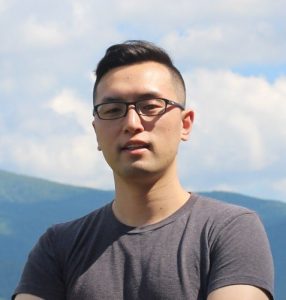 Yuanlong Xiao
Yuanlong Xiao
Wednesday, December 4th, 2019
Raisler Lounge
“Reducing FPGA Compile Time with Separate Compilation for FPGA Building Blocks”
Bio: Yuanlong Xiao receives his Master Degree of Microelectronics from Fudan University, China in 2017 and Bachelor degree of Microelectronics from Sun Yat-sen University, China in 2014. His research interest is quick computing mapping, reconfigurable computing and FPGA chip design.
Read Yuanlong's Abstract
Abstract: In this talk, we are going to talk about how to realized quick FPGA computing mapping. Today’s FPGA compilation is slow because it compiles and co-optimizes the entire design in one monolithic mapping flow. This achieves high quality results but also means a long edit-compile-debug loop that slows development and limits the scope of design-space exploration. We introduce PRflow that uses partial reconfiguration and an overlay packet-switched network to separate the HLS-to-bitstream compilation problem for individual components of the FPGA design. This separation allows both the incremental compilation, where a single component can be recompiled without recompiling the entire design, and parallel compilation, where all the components are compiled in parallel. Both uses reduce the compilation time. Mapping the Rosetta Benchmarks to a Xilinx XCZU9EG, we show compilation times reduce from 42 minutes to 12 minutes (one case from 160 minutes to 18 minutes) when running on top of commercial tools from Xilinx. Using Symbiflow (Project X-Ray/Yosys/VPR), we show preliminary evidence we can further reduce most compile times under 5 minutes, with some components mapping in less than 2 minutes.
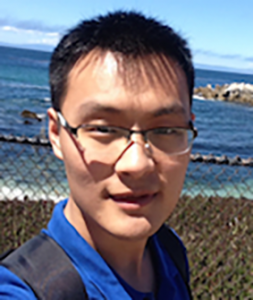 Shaoru Chen
Shaoru Chen
Wednesday, December 11th, 2019
Raisler Lounge
“Safety Verification of Nonlinear Polynomial System via Occupation Measures”
Read Shaoru's Abstract
Abstract: In this talk, we introduce a flexible notion of safety verification for nonlinear autonomous systems by measuring how much time the system spends in given unsafe regions. We consider this problem in the particular case of nonlinear systems with a polynomial dynamics and unsafe regions described by a collection of polynomial inequalities. In this context, we can quantify the amount of time spent in the unsafe regions as the solution to an infinite-dimensional linear program (LP). We approximate the solution to the infinite-dimensional LP using a hierarchy of finite-dimensional semidefinite programs (SDPs). The solutions to the SDPs in this hierarchy provide monotonically converging upper bounds on the optimal solution to the infinite-dimensional LP.
